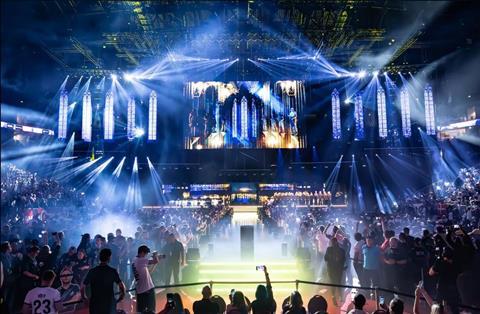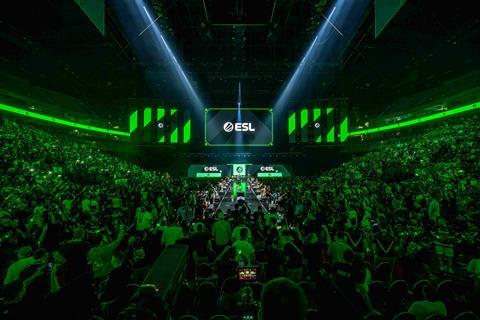Ulrich Schulze, SVP of game ecosystems at ESL FACEIT Group, looks at how broadcasters will have to adapt their sport coverage for esports

If you need proof that esports has gone fully mainstream, look no further – the first-ever Olympic Esports Games have been confirmed for 2027. This isn’t just a milestone for gaming; it’s official validation that esports is now a major player in the global sports arena.
With qualifying competitions kicking off later this year, broadcasters need to start thinking about how to integrate esports into their programming. But here’s the challenge: esports audiences don’t engage with broadcast content like traditional sports fans. Their viewing habits, expectations, and communities are completely different.
To capture and keep their attention and compete with streamers, broadcasters need to rethink their playbook.
Digital by design
Gaming and esports have exploded from niche communities into a cultural juggernaut, influencing entertainment, fashion, and media. Yet, despite their global appeal, they remain deeply rooted in diverse subcultures – each with unique interests and preferences.
Many of today’s gamers are Gen Z and Millennials, digital natives who consume content in ways that don’t align with traditional sport broadcasting. They prefer social platforms like Twitch and YouTube over broadcast TV, where streamers and esports players command massive fandoms.
Because esports isn’t just a game – it’s a spectacle, and in many ways, offers a more immersive fan experience than traditional sports. Viewers don’t just watch; they follow every move, interact in real time, and get direct insights from their favourite players.
It’s no surprise that esports viewership is expected to surpass 640.8 million this year, according to Statista. The Esports World Cup 2024 attracted over 500 million viewers, making it the most-watched esports tournament of the year, while top streamers like Shroud consistently draw tens of thousands to live streams and boast millions of YouTube subscribers.
The demand for esports content is clear. But to capture this passionate audience, content must be authentic, engaging, and tailored to their needs.
Fuelling engagement
Gaming fandoms are more fragmented than traditional sports audiences, so a one-size-fits-all approach won’t work. Just as you wouldn’t have a rowing specialist comment on Olympic football, esports coverage needs game-specific experts who understand the nuances of each title.
Authenticity is also key. Esports is personality-driven, and fans form strong connections with their favourite players, creators and streamers. Partnering with well-known gaming personalities can provide expert insight and a way to tap into their dedicated audiences. Bringing in recognisable faces from Twitch and YouTube can help bridge the gap between traditional broadcasters and these digital-native fans.
It’s also good to bear in mind that, globally, over 45% of gamers are women, according to NewZoo, and influencers like SSSniperWolf command tens of millions of followers on YouTube, so make sure the coverage is balanced.

A fan-first approach
Unlike traditional sports, esports thrive on interaction. Fans don’t just watch; they chat with streamers, engage in real-time discussions, and form communities around their favourite teams. Broadcasters should embrace this dynamic, integrating interactive elements that bring fans closer to the action.
Players, in turn, bring their personalities to the game – and that’s what fans want to see. Coverage should capture the intensity of competition, from team communications to clutch moments that make esports so thrilling to watch.
Esports fans aren’t just passive viewers, most know the game inside out. Instead of a top-down expert analysis, coverage should adopt a fan’s perspective, allowing audiences to focus on their favourite players, teams, or moments rather than what a commentator deems most important.
Ultimately, esports is all about engagement. Find ways to involve fans in the coverage, whether through polls, live chats, or exclusive behind-the-scenes content. The closer the connection between players and fans, the better the coverage will resonate.
Get game-ready
With the Olympic Esports Games still two years away, broadcasters have a prime opportunity to build their presence and capture audiences now. But success won’t come from just covering the main event, what you do before the games matters just as much. A strong lead-up builds anticipation and proves you understand the gaming community and are committed to serving their needs.
Because broadcasters aren’t just competing with each other; they’re up against social platforms that have made gaming content instantly accessible and endlessly bingeable. To keep up, they must offer content in multiple formats, including short-form clips for easy sharing. Bear in mind that gamers consume content across multiple devices, whether they’re catching highlights on their phone, tuning in with friends on Discord, or watching live on a second screen, and you have to accommodate this.
Time zones can also prove a challenge. With the games set in Saudi Arabia, many fans will struggle to tune in live. That’s why content must be available immediately after airing, ensuring fans can catch up without missing a beat.
Planning for the now
Esports isn’t the future – it’s the now. And in just two years, it will take centre stage in mainstream media.
Broadcasters need to get ahead of the game by securing creator partnerships, commissioning gaming-focused content, and crafting coverage strategies that truly resonate with this audience.
The Olympic Esports Games will be a tentpole moment, but the real opportunity lies in the build-up and aftermath. Consistently engaging with these passionate, highly influential communities will be the key to earning their trust and keeping them tuned in long after the games are over.

Ulrich Schulze is SVP of game ecosystems at ESL FACEIT Group







No comments yet